Visitors to Croton-on-Hudson, New York, often drive or walk by a local landmark that is located at the intersection of Old Post Road and Grand Street. Reactions to it are quite mixed. Some find it charming; others think it is ugly and out-of-date, yet there are those who realize it is a true community heirloom. It is simply referenced as the “dummy light,” a traffic signal that stands on a pedestal at the center of that intersection.
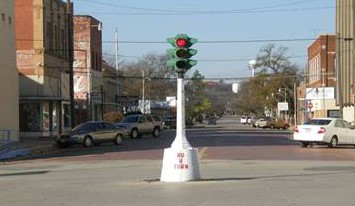
In an era when intersections were controlled by a single traffic signal, many similar dummy lights were installed on pedestals in the center of intersections to replace beacons or “mushrooms” that marked the center of an intersection and separated opposing traffic, with the infrastructure used for the beacons and mushrooms serving the new “stop and go” type signals.
There are still at least three surviving in New York State. Besides Croton-on-Hudson there are operating dummy lights in Beacon and upstate Canajoharie. There have been numerous requests in recent years for their removal due to safety concerns, but their historic value has kept these treasures at their original locations. Over the years many communities in Westchester County such as Chappaqua, White Plains, and the City of Yonkers had them controlling traffic in the center of their downtowns, but they are all gone today.
The world’s first traffic lights were installed near London’s House of Commons in 1868. They resembled railway signals of the time, with semaphore arms and red and green gas lamps for night use. The gas lantern was turned on with a lever at its base so that the appropriate light faced traffic. Unfortunately, it exploded a year later, injuring the policeman operating it.
The earliest traffic signals or lights in the United States were patented in Chicago in 1910. The system used the non-illuminated words “stop” and “proceed.” In 1912, Salt Lake City invented an electric traffic light that used red and green lights. A year later manually controlled traffic lights were installed in Cleveland by the American Traffic Signal Company, that had electric lights that illuminated the words “stop” and “move” allowing police and fire stations to control the signals in case of emergency.
The first automatic traffic signal using red and green colored lights was built in San Francisco in 1917. At the same time, the first interconnected traffic signal system was installed in Salt Lake City, with six connected intersections controlled simultaneously from a manual switch.
Automatic control of interconnected traffic lights was introduced in 1922 in Houston.
In 1920 a police officer in Detroit invented several automatic electric traffic light systems including an overhanging four-way red, green, and yellow system, the first to use a yellow light.
In 1952 the first “Don’t Walk” automatic signs were installed in New York City. Ashville, Ohio claims to be the location of the oldest working traffic light in the nation, used at an intersection until 1982, when it was moved to a local museum.
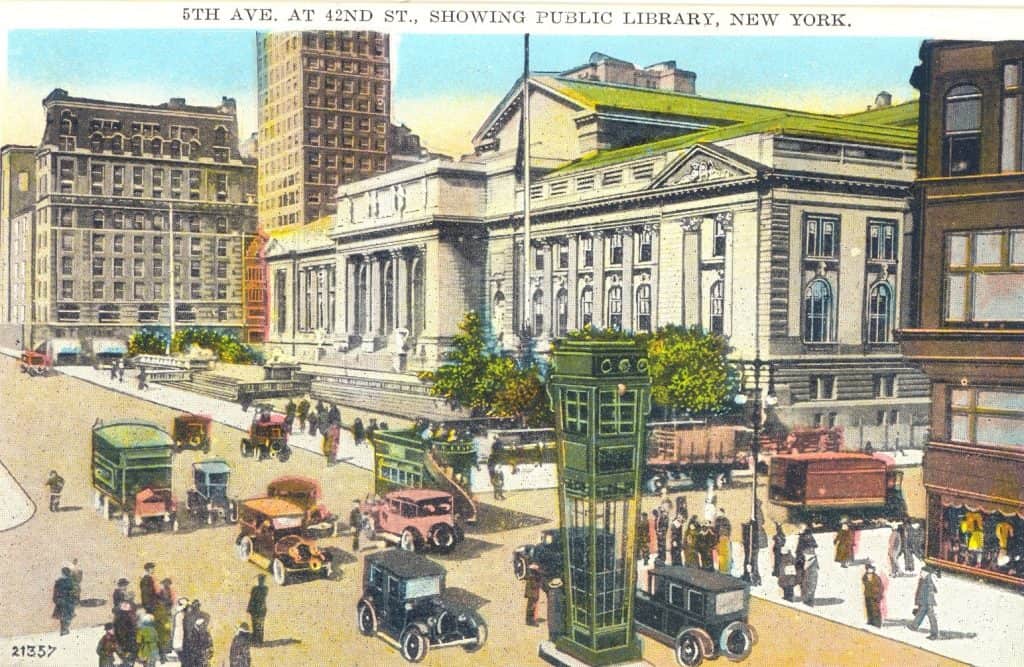
New York City began installing colored traffic lights throughout Manhattan in 1920. These unique traffic towers would show only one color at a time: red for north-south movement (main avenues), yellow for all traffic to stop, and green for east-west movement (side streets). Stationed at each tower was a traffic officer to enforce the signals. This helped a great deal with the growing popularity of the automobile.
The color of traffic lights representing stop and go are likely derived from those used to identify port (red) and starboard (green) in maritime rules governing right of way, where the vessel on the left must stop for the one crossing on the right.
A longtime area resident remembers that when he was a boy there would be signs on the side of the road, which explained to drivers which colors were being used in that particular village for traffic lights. Colors were different from place to place – a situation that could be confusing.
In 1926 a Village of Croton ordinance stated, “No vehicle approaching a street intersection where a traffic light is in operation shall enter such street intersection while such traffic light shows red or yellow, and such vehicle shall enter such intersection only when such intersection shows green.” Before 1926 motorists coming to a busy intersection had no traffic light to help them.
A retired employee of the Croton’s Department of Public Works remembers that one of his responsibilities was the servicing of the dummy light. He recalled that the control box had been installed around 1970, and he knew that the light itself was put in operation about 1926. Printed on the inside of the control box was Marbelite Company, Inc. Brooklyn, New York.
Many Croton residents say that the traffic light is called the “Dummy Light” because it’s not very intelligent to stand out in the middle of the road while traffic goes by.
The light consists of nine (9) fifteen-watt LED lamps inside. Each lamp (bulb) is expensive but lasts a long time. The side facing west does not have working lights since there is no traffic coming from that direction. When the dummy light was first installed, there was a light underneath the traffic signal facing down towards the street, allowing the bottom of the structure to be illuminated, making it easier for drivers to see the entire fixture. The actual metal structure holding the light was about seven feet tall.
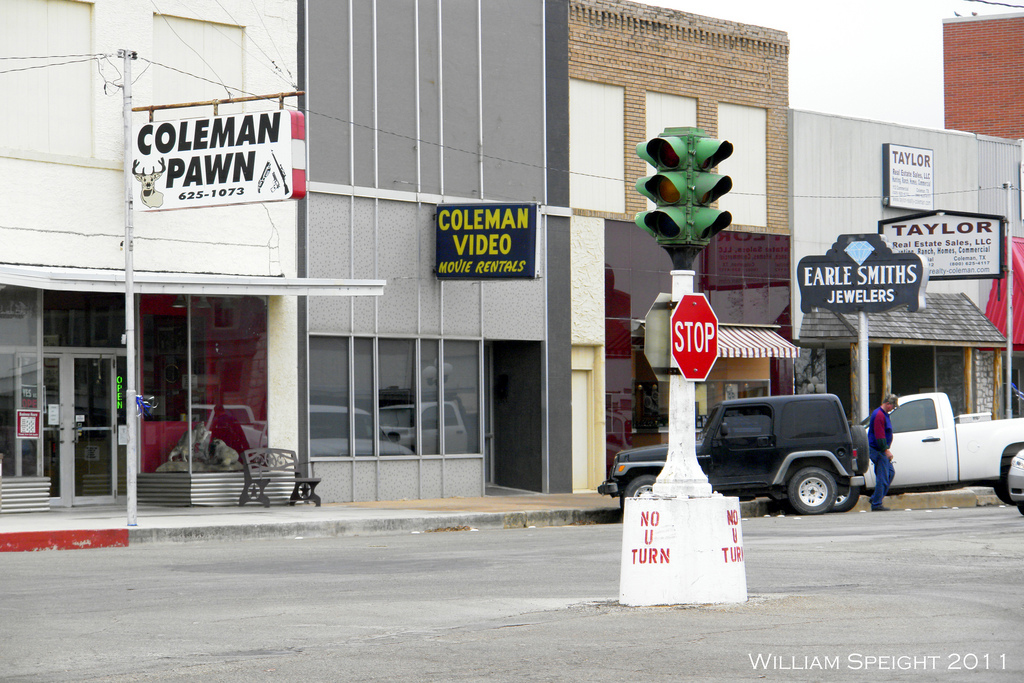
Marbelite, first located at 27 Warren Street and Broadway in New York City, began making traffic control equipment in 1923. One of their earliest magazine advertisements read, “We guarantee quality and service.” The company supplied most of the traffic control equipment for the expanding metropolitan area, including Westchester County and New Jersey. While city signals had traditional “tunnel” visors, Marbelite created distinctive “tunnaway” visors, cutaway shields that have a thick collar near the lens that makes them look like a combination between a tunnel and cutaway visor. It made them quite popular plus the lenses and reflectors were made of glass.
Another company that specialized in traffic control equipment was “Crouse-Hinds.” Crouse-Hinds was one of the most popular brands of traffic signals made. They were quite attractive at the time, well built and priced so most municipalities could afford them. Crouse-Hinds started making traffic signals in Syracuse, New York in 1922, stopping production in 1982. In their sixty years they produced six different models – many of which are still in service.
Beacon is a city located in Dutchess County. It was named to commemorate the historic beacon fires that blazed forth from the summit of nearby Beacon Mountain to alert Continental Army about British troop movements during the Revolutionary War.
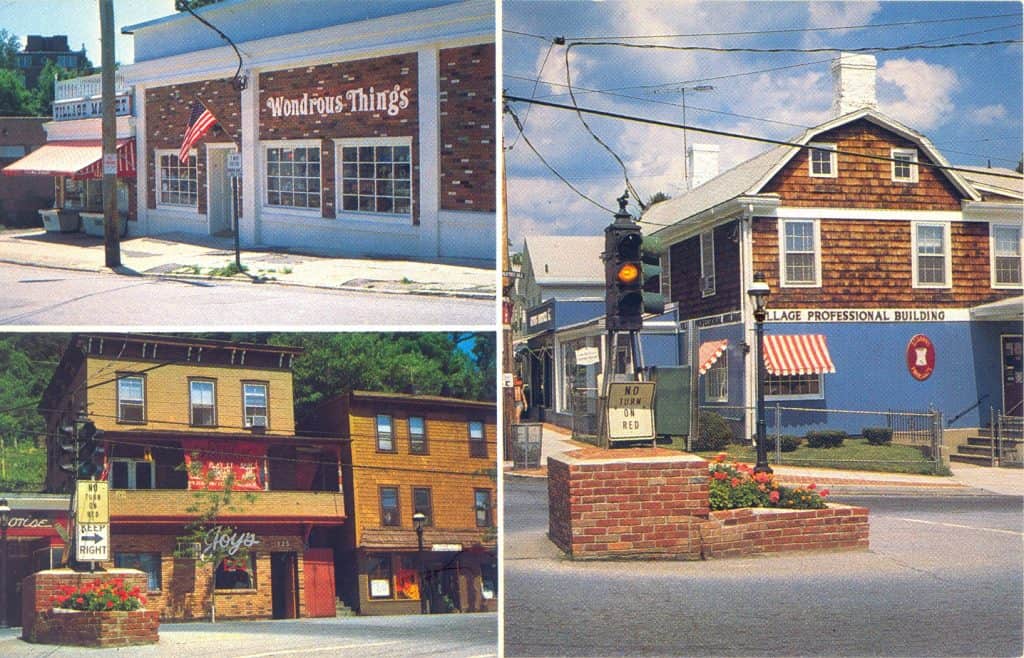
Their first dummy traffic light purchases for use in Beacon came from the Essco Manufacturing Company of Peoria, Illinois in 1926. A yellow light meant get ready to go, green was go, and red stop. The lights changed every forty seconds, Power for the signal was turned on manually by the police at 8 AM and off at 10 PM, to save electricity.
In 2007 Beacon government officials held a workshop to discuss downtown urban renewal which included the possibility of moving the city’s dummy light to another location. Most citizens in attendance strongly urged officials to keep the light where it had been for some eighty years. Many felt it was an historic treasure with character, and they loved driving around it, they were used to it and it made them feel like home. In the end, the City Council voted to keep the light in the middle of Main Street looking somewhat akin to a cement scarecrow.
Canajoharie is in Montgomery County, New York. The Erie Canal passes on the north side of the community, it is the headquarters of the Beech Nut Baby Food Company, home of the railroad sleeping car, and where the stones in the Brooklyn Bridge were quarried. Their dummy traffic light was installed in 1926 and soon after their local traffic instructions were published in the local newspaper. The locals were told to cut out the instructions and paste it in their hat. A few years ago New York State wanted to remove the light, but citizens put up such a fuss that the state backed down.
After a dummy light was knocked down by a truck in 2010, the city of Coleman, Texas, decided to preserve and refurbish its last pedestal mounted dummy light as part of its historic district preservation.
In 2011 the Arkansas Historic Preservation Program nominated the last remaining pedestal mounted signal in Arkansas, located in Smackover, to be listed on the National Register of Historic Places.
Increases in traffic flows have prompted calls for these types of traffic lights to be removed due to safety concerns, but their historic value has kept these landmarks at their original locations. Many communities are in the process of re-developing their downtown business areas, so deciding what to do with their remaining dummy lights becomes an issue for residents.
Two such locations are Reading and Dedham, Massachusetts. In Dedham a downtown makeover of streets and sidewalks is taking place. To reduce traffic delay and vehicle conflict their “dummy signal” is being replaced by overhead lights. Reading began redevelopment of their downtown in 2008 with plans that called for the removal of their 1937 “Old Yellow” dummy light. Residents organized a protest movement pointing out that other dummies are present in countries like England, Russia, and Spain.
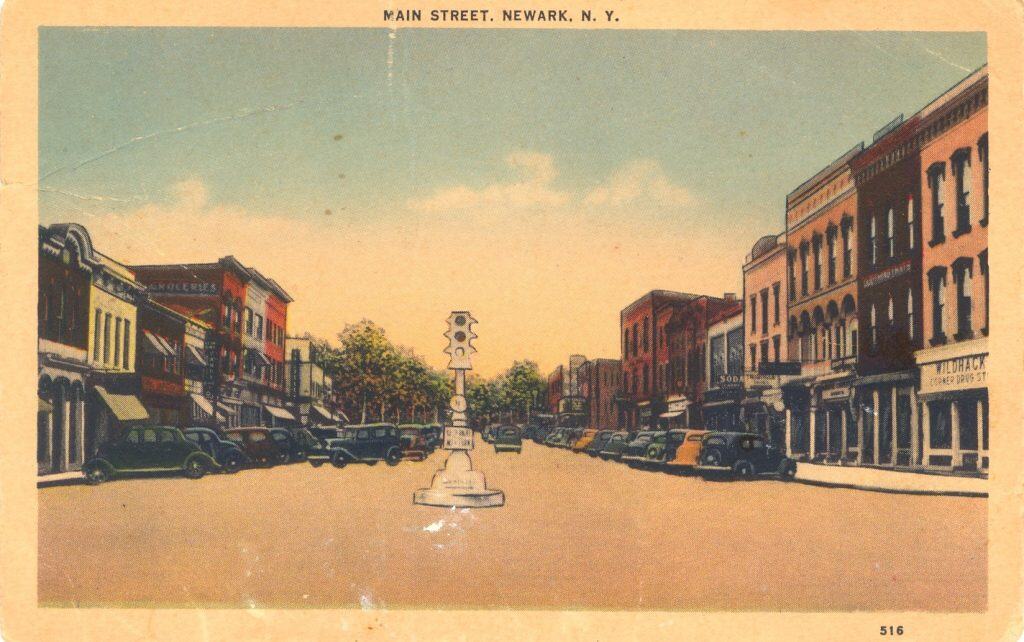
Perhaps the location should remain unannounced, but it should be reported that in June 2008, a “Dummy Bash Demolition Day” was held in a downtown area where a renovation project was nearing completion. The residents were invited to whack the old dummy light with a sledgehammer. Three whacks for $25. The money raised almost paid for the reconstruction project.
***
This article first appeared in May 2014 in the Taconic Postcard Club’s newsletter.
What a lot of information ! I wonder if there were messages on any of the cards?
I hope the few remaining “dummy lights” survive, but new ones could obviously never be installed!
The dummy light in Canajoharie was knocked down in 2021. It wasn’t there the last time I drove through but there was a campaign to put it back up. I don’t know if it’s there now. Also, Beechnut Baby Food Company left Canajoharie in 2011. Their headquarters are in Amsterdam, N.Y. There was a traffic light in the middle of an intersection (a dummy light?) in Poughkeepsie N.Y. (about 17 miles north of Beacon) when I moved there in 1978 but it’s gone now. It was at the intersection of South Hamilton St., Montgomery St., and Hooker Ave. I don’t… Read more »